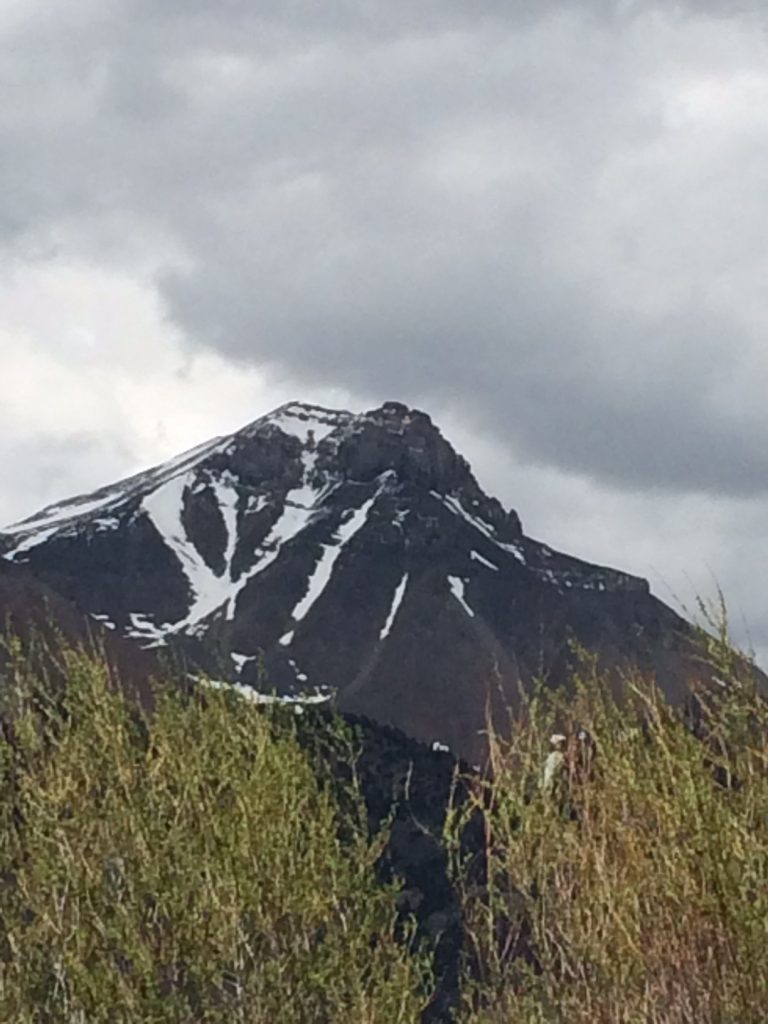I slept in at my Mackey Park campsite and did not get going from the trailhead until 7:40AM in moderate temps. I was here to climb McCaleb by the West Ridge but if that snow was firm, I might be able to make something of a long (2000′) white line that constituted the right tong of the trident penetrating the upper slopes. It was a partly cloudy, May 17th.
I would learn later that this right tong leads directly to the summit. New snow in the past week sat loose and soft on top of well-transformed neve. As I reached the lower snowfields, I was pleasantly surprised to find firm edging and when the slope steepened, I donned my crampons. I had just one tool so the many places where the meltwater formed water ice, provided prep for what lay ahead. The slope steepened as it was pinched between gigantic rock buttresses.
From below, all I could see was a thin wafer of vertical ice leading to the final snow slopes. I held out hope that something would avail itself to the right or the left once I was in the belly of the beast. Sure enough, a right escape ramp allowed me to access the ridge just below and right of the summit (and left of McCaleb Benchmark–11,592′).
On the summit, I removed my crampons which would have helped me descent the steep neve off the west face. Instead, I boot packed my way down the ridge to the NW which leads toward Little Mac. The angle of the snow fields had diminished enough from there that I could boot and butt glissade down until the snow thinned out.

The right tong of the trident leads directly to the summit. The wide section near the top affords a dance-around to avoid 15′ of vertical water ice. Neil Gleichman Photo
With a partner, 2 ice tools and rigid boots, a pair of assertive climbers could surmount the wafer–or option B to the left which is wider but just as long (~15′). As with most ice and snow routes in Idaho’s high, dry ranges, timing is everything and finding optimal conditions takes patience and a flexible schedule. I was toward the end of the season for this line and would not want to be ascending this hourglass when the summer turns it to a bowling alley.